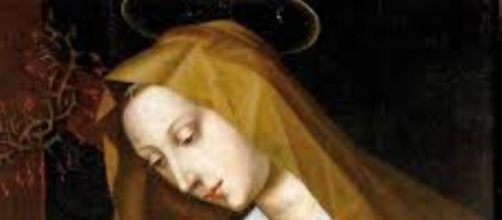The uffizi, an age-old museum dating back to the Renaissance, is doing something new. More paintings by women will now be shown. Why now? Museum director Eike Schmidt told the press that he got the idea in 2015 from the Guerilla Girls, a feminist group rallying for gender equality in exhibit halls since 1985. There are a couple of ironies to this news. For one, the Uffizi owns more work by female artists living before the 19th century than any other treasure house. Odd that no one thought to showcase their work before.
Stopping sexist art shows
The other irony: If it weren’t for a woman, the Uffizi wouldn’t be the tourist attraction that it is, drawing 1.5 million visitors a year.
The collection was privately owned for centuries, beginning in the 1400’s, and was only made public when the last of the Medici’s, Anna Marie Ludovica de Medici, declared in 1737 that all the art owned by her ancestors should be made available for the enjoyment of the people. Yet here we are in 2017, nearly three centuries later, and only now did it occur to someone to let up on the male domination of its exhibits.
Ghettoizing female art
The first woman to get a one-person show at the Uffizi will be Florence’s earliest known female painter of the Renaissance –- Suor Plautilla Nelli -- a nun in the convent of Santa Catarina, which was known for its nuns-artists, several of whom are said to be children of Florentine artists.
The good news is that this exhibit won’t be some one-shot, token deal or mounted as a special event. Instead it will be the start of an ongoing program. To hear Schmidt tell it the Uffizi is “overdue and ready to put great female artists” on the walls. This means that he won’t marginalize women in corner exhibit spaces. Visitors will soon see whole rooms full of female art, including a reinstallation of women’s self-portraits that had been hanging in passageways and seldom seen.
The director estimates that less than one percent of museum-goers paid attention to work in hallways.
Trending now
But again, as welcome as Schmidt’s plans are, this column continues to wonder why it took so long to correct such an obvious exclusion -- especially given the record number of works by women in the Uffizi collection.
Did Schmidt really need a flock of feminists to make the case? Whoever prompted the case, a trend in museums seems to be emerging, with a whole lot more female art shows. The Rubens House mounted a one-person show for 17th century painter Michaelina Wautier. The Museum of Modern Art is showing the work of women who were abstract artists, and last year’s Museo del Prado offered a looksee at 17th century painter Clara Peeters. Even so, it just seems so late for museums to dig up art so long buried in their vaults. Thanking them would be like thanking an assailant who beat you up for stopping.

